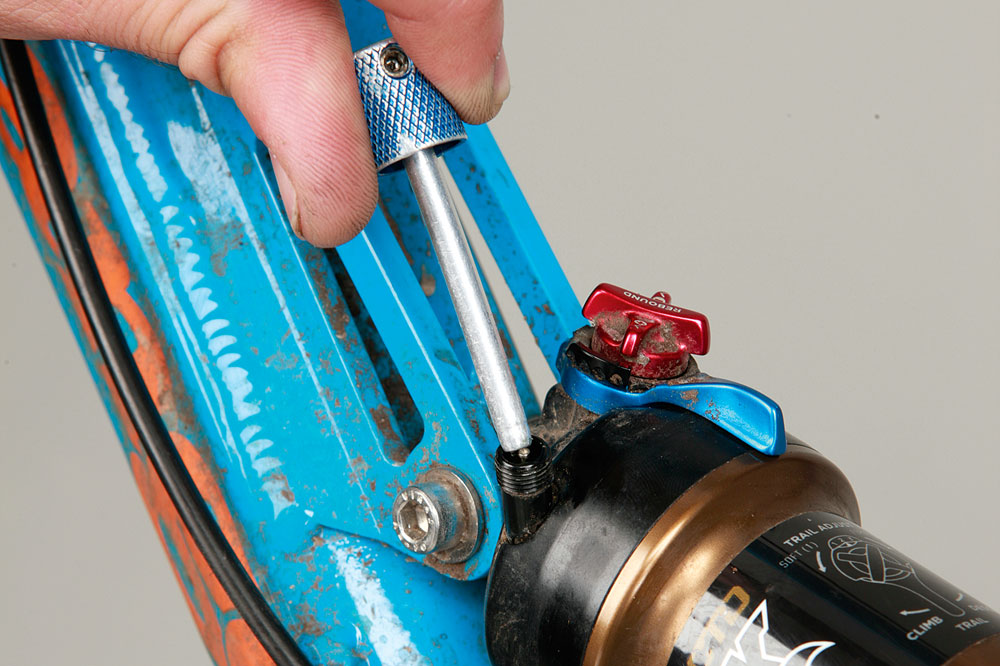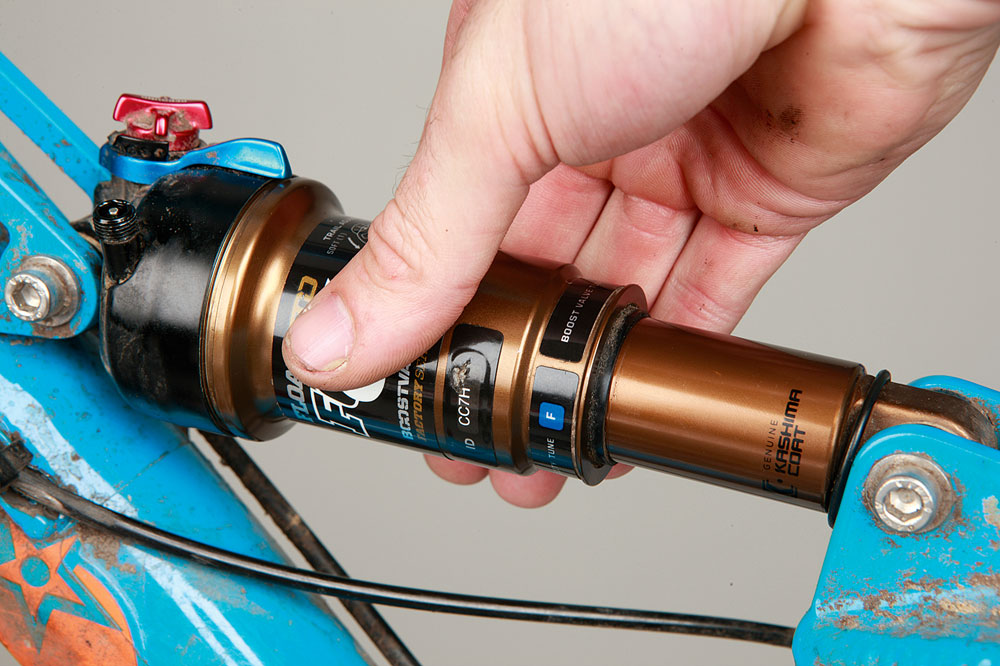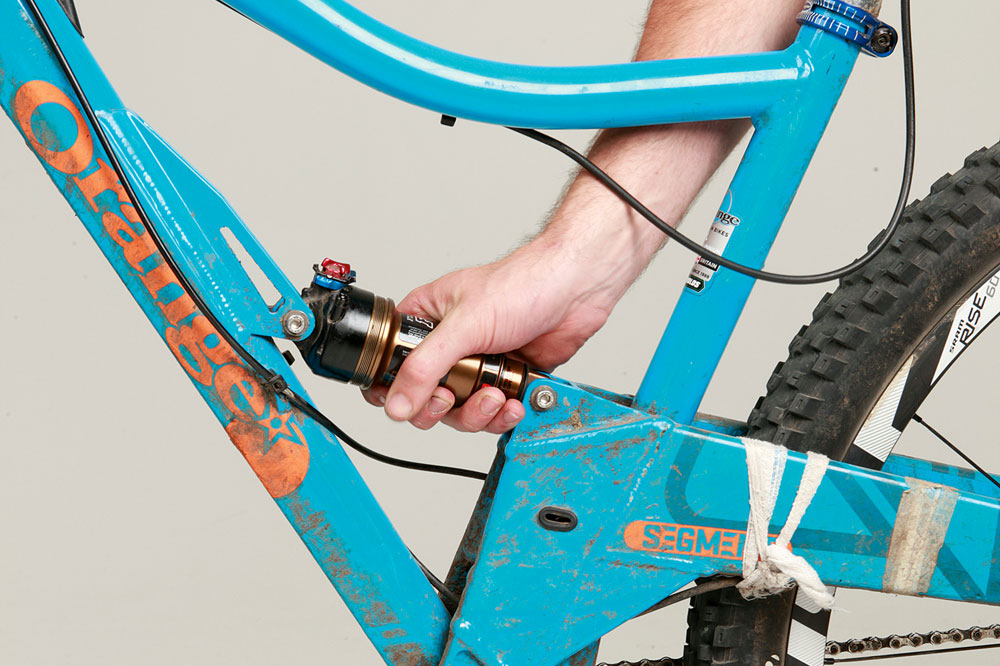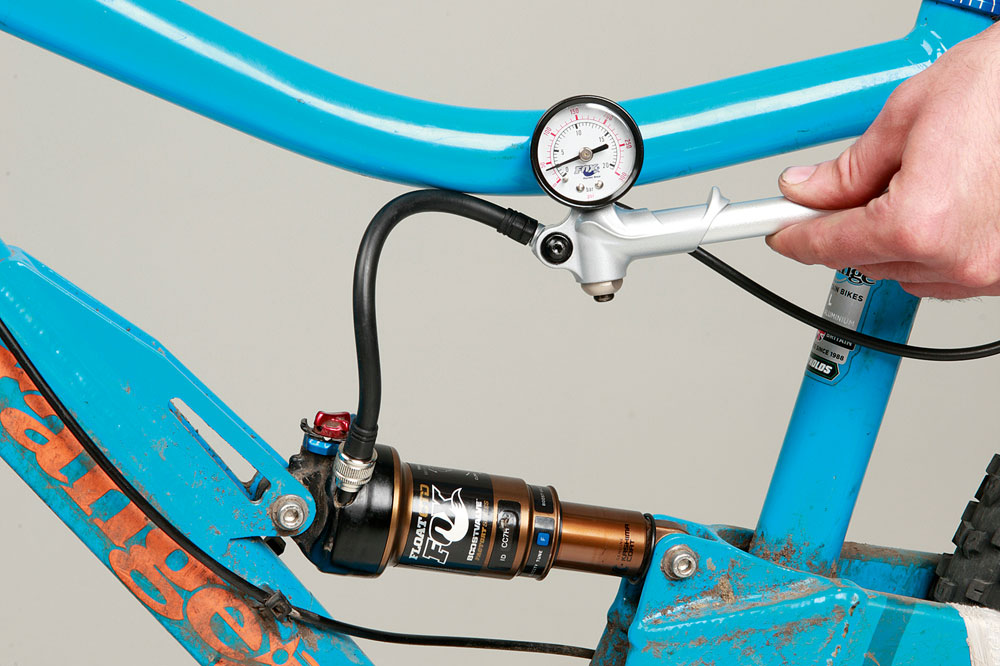It's simple to radically change the performance of your Float shock by adding a volume-reducing spacer
How to tune the performance of your Float shock by changing the spring curve using volume-reducing spacers.
If your bike continually pops its o-ring off the shock, a volume spacer could be just the job.
>>> What happens when you blow through your travel?
It’s no secret now that volume spacers can dramatically change the performance of a suspension fork, but did you know that you can also fit them in a rear shock?

Same principle as fork spacers
The air volume spacers here are for Fox Float rear shocks and there are three different sizes, although you can only put one in at a time and can’t stack them like you can in a fork.
Unlike fork spacers, which are included in the box, you will also have to buy a shock spacer kit aftermarket (unless you have a Float X2). This costs you around £33 from mojostore.co.uk and includes all three spacer sizes and a sachet of Float fluid.
>>> What goes on inside the Fox DHX2 shock? (VIDEO)
More progressive
When you install a spacer you should feel the shock become more progressive. That is, as the shock goes further into the stroke, it will be harder to use more travel. On the trails this means it will feel softer at the start of its stroke and harder towards the end. The bigger the spacer you install the more pronounced the effect.
The difference may not be as noticeable as on a fork but it’s still a neat way to gain a bit of custom tuning to your ride.
>>> Fox reveals new Float shock and 34 fork
Change it on the trail
Depending on the design of your rear suspension you can usually complete this procedure on the bike without having to remove the shock, which means – if you’re brave – you could maybe even do it on the trail and experience immediately how this changes the feel of your suspension.
However, for some bikes it may be easier to do it off the bike using a vice to hold the shock. If you go down this route make sure you don’t clamp the shock too hard as this can damage the mounting hardware.
Need to know
- TIME TAKEN: 15 minutes
- DIFFICULTY LEVEL: Piece of cake
- TOOLS REQUIRED: Pipe strap (or old inner tube), shock pump, Fox Float Fluid

You may not have to remove the shock
You can remove the shock to do this procedure but if your shock is accessible Luke reckons you should leave it in place as it saves you time.

Let all the air out of the shock.
Noting down what pressure you had it beforehand may come in handy later by the way.
Top tip: if you have an EVOL air can, let the air out slowly or it will get into the negative air chamber.

Loosen the air can
Using a pipe strap, turn the air can anti-clockwise and loosen it from the shock body
Top tip: no pipe strap? Use an inner tube instead.

Unscrew the canister by hand
Warning! A small amount of Float Fluid may come out when you loosen the canister. It isn’t harmful but you may want to put down a towel or use gloves.

Slide the canister down
Slide the canister to the bottom of the shock and slide down the bottom-out bumper and backing plate to the bottom of the shaft.

If there’s already a spacer in there
If you need to remove a spacer, use a blunt tool, or circlip pliers, to pry it apart before taking it out.

Put the new spacer on the shaft
Put the spacer in between the backing plate and the top of the shock. The flat surface of the spacer should face to the top.

Click the spacer into place
Push the spacer until it engages the top of the shock, You should hear it click. This can be quite stiff, so you may need two hands for it.

Put some fluid in
If your shock feels dry, pour 2cc of Float Fluid into the canister. This is just less than half of the sachet.

Bottom out your bike
To help you refit the canister, bottom out your bike and then screw the canister back on.

Tighten up the air can
Make sure the canister is hand tight and firmly secured.

Pump up the shock
Re-inflate the shock, using the same pressure as before as a starting point.
Thanks to Luke Burnett for this guide. Luke is a former downhill racer turned Mojo shop technician. He fixes forks in the week and tries to keep up with Mojo boss Chris Porter’s crazy contraptions at the weekend.




